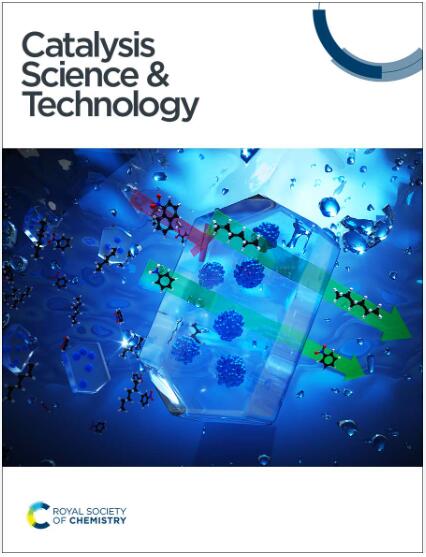用于 CO2RR 的 Ni-N-C 催化剂的设计和催化性能调查:一项理论研究†。
IF 4.4
3区 化学
Q2 CHEMISTRY, PHYSICAL
引用次数: 0
摘要
本文章由计算机程序翻译,如有差异,请以英文原文为准。

Design and catalytic performance investigation of the Ni–N–C catalyst for CO2RR: a theoretical study†
The combustion of fossil fuels is increasingly contributing to global warming. The recycling of CO2 plays a crucial role, and the creation of a highly efficient electrocatalyst is essential for enhancing the efficiency of the reaction. This work focused on the theoretical design of Ni–N–C catalysts with different coordination environments of Ni through quantum chemical calculations and analyzed the differences between the coordination environments of pyridine N and pyrrole N on the performance of catalytic CO2 reduction to CO in order to identify the most efficient catalyst configuration. The Ni–N bonding energy of the catalyst with a vacancy was greater than that of the catalyst without a vacancy, and the activation ability of Ni-pyridine N2C1–C was the best. Ultimately, examining various catalysts for converting CO2 into CO revealed that Ni-pyridine N2C1–C exhibited the most effective catalytic impact. In contrast to the energy barrier ΔG = 2.9903 eV in the absence of a catalyst, the energy barrier ΔG = −1.4029 eV during the CO2 to CO catalytic reaction decreased by 4.3932 eV. This decrease was the largest among all the catalysts mentioned above, and the reaction could be spontaneous from a thermodynamic perspective. The research results provide a theoretical reference for the experimental preparation of catalysts for CO2 to CO conversion and the resource utilization of CO2.
求助全文
通过发布文献求助,成功后即可免费获取论文全文。
去求助
来源期刊

Catalysis Science & Technology
CHEMISTRY, PHYSICAL-
CiteScore
8.70
自引率
6.00%
发文量
587
审稿时长
1.5 months
期刊介绍:
A multidisciplinary journal focusing on cutting edge research across all fundamental science and technological aspects of catalysis.
Editor-in-chief: Bert Weckhuysen
Impact factor: 5.0
Time to first decision (peer reviewed only): 31 days
 求助内容:
求助内容: 应助结果提醒方式:
应助结果提醒方式:


